| C H A P T E R 3 |
|
Server Description |
The Netra CT servers slide into the chassis and are secured to the chassis using captive screws at the top and base of the server. Each Netra CT server is an independent computer, with its own host CPU card, midplane, I/O slots, and, in some cases, storage devices and removeable media.
The Netra CT chassis supports two types of Netra CT server:
|
Note - The Netra CT chassis also supports the Netra ct 800 server and the Netra ct 400 server. For more information on those servers, refer to the documentation that you received with those servers. |
TABLE 3-1 gives the physical specifications for the Netra CT 810 server, and FIGURE 3-1 shows the Netra CT 810 server.
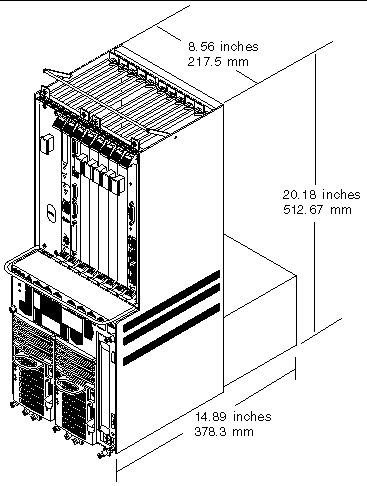
TABLE 3-2 gives the physical specifications for the Netra CT 410 server, and FIGURE 3-2 shows the Netra CT 410 server.
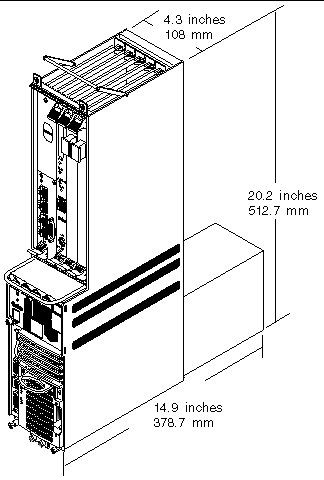
The following combinations of the two server types are supported in a Netra CT chassis:
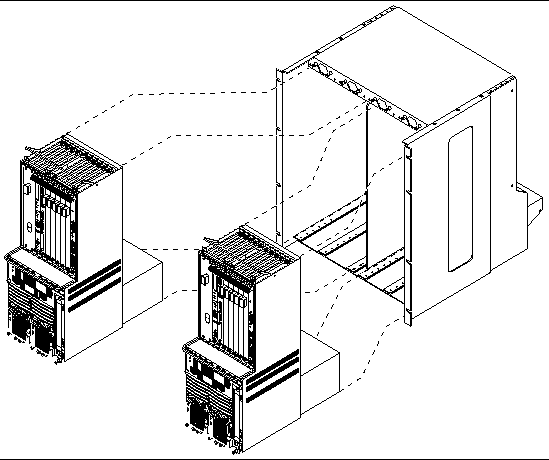
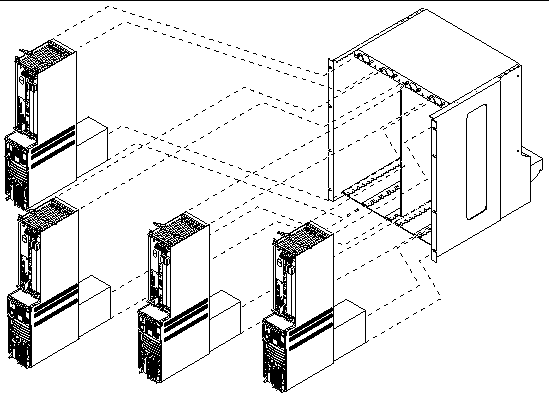

If you are not sure whether you have a Netra CT 810 server or a Netra CT 410 server, go to the front of the chassis and locate the system status panel (FIGURE 3-6).
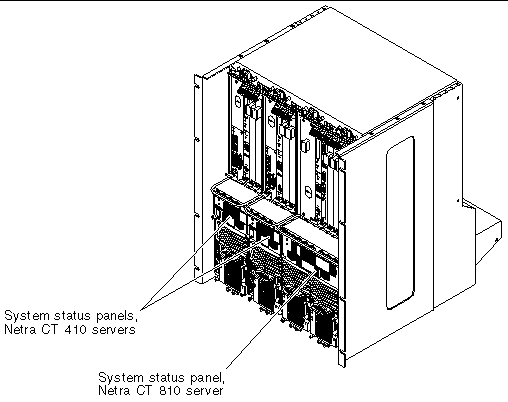
The server identifier at the bottom right corner of the system status panel tells you if you have a Netra CT 810 server or a Netra CT 410 server (FIGURE 3-7).

Each Netra CT server has a midplane. A midplane is the functional equivalent of a backplane. The CPU card, storage devices, and I/O cards all plug into the midplane from the front of the chassis, and the rear transition cards plug into the midplane from the rear. The midplane for each server is secured to the back of the server unit.
They support the 5V-V10 CompactPCI bus. Although the CPU card will only support the 32-bit CompactPCI bus, the midplanes in both Netra CT servers will allow 64-bit peer-to-peer transactions. The midplanes will also support the H.110 telephony bus on all but these slots:
Slot 1 in the Netra CT 810 server and slot 3 in the Netra CT 410 server are reserved for the host CPU card. Slot 8 in the Netra CT 810 server and slot 1 in the Netra CT 410 server are proprietary I/O slots, intended solely for alarm cards. All CompactPCI slots support basic, full and high availability hot swap on every CompactPCI slot.
FIGURE 3-8 shows the different buses on the Netra CT 810 server and FIGURE 3-9 shows the different buses on the Netra CT 410 server.
 [ D ]
[ D ]
 [ D ]
[ D ]
Both Netra CT 410 servers and Netra CT 810 servers can be either front-access or rear-access models. A front-access model is a server that is designed so that all the cables to the CompactPCI cards are connected from the front of the chassis, and a rear-access model is designed so that all the cables to the CompactPCI cards are connected from the rear of the chassis. The front and rear-access models are mechanically different from one another. All models of servers in a chassis--whether it is a Netra CT 410 server or a Netra CT 810 server--must have the same type of cable access, all front or all rear; you cannot have both front and rear-access model servers in the same chassis.
For the front-access model of the Netra CT 410 server, all of the CompactPCI cards installed in the servers are installed from the front of the server and the cables are connected from the front. There are no cards installed or cabling from the rear of the server, so the back of the Netra CT server chassis is closed for front-access models. FIGURE 3-10 shows the top view of the front-access model of a diskfull Netra CT 410 server, and FIGURE 3-11 shows the top view of the front-access model of a diskless Netra CT 410 server.
 [ D ]
[ D ]
 [ D ]
[ D ]
For the rear-access models of both the Netra CT 810 server and the Netra CT 410 server, all the cables are connected to rear transition cards installed at the rear of the Netra CT server. The rear transition cards, in effect, extend the CompactPCI cards installed in each slot from the midplane to the rear of the chassis. The rear-panel transition cards are "in-line" with the front CompactPCI cards.
Each rear transition card installed in a rear-access model must have an accompanying card installed in the front card cage of the server; however, the type of card installed in the front card cage varies:
FIGURE 3-12 shows the top view of the rear-access model of a Netra CT 810 server with an alarm card installed, and FIGURE 3-13 shows the top view of the rear-access model of a Netra CT 410 server.
 [ D ]
[ D ]
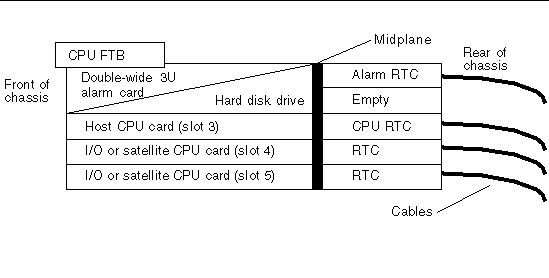 [ D ]
[ D ]
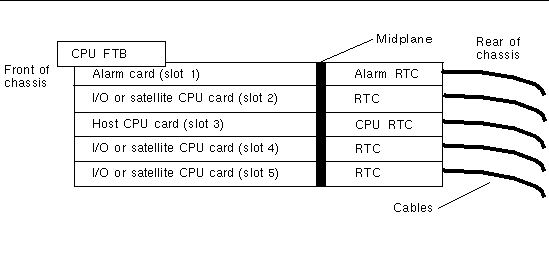 [ D ]
[ D ]
The slot to the left of the power supply in the Netra CT 410 server is reserved for the host CPU front transition card (FTC). The host CPU front transition card is not needed for the rear-access model of the Netra CT 410 server, so a host CPU front termination board is installed in this slot for the rear-access model (see Host CPU Front Termination Board (Netra CT 410 Server Only) for more information).
If you are not sure whether you have a front-access or a rear-access model, go to the front of the chassis and look at the top part of the chassis.
|
Note - AC-powered servers are only available in rear-access models. |
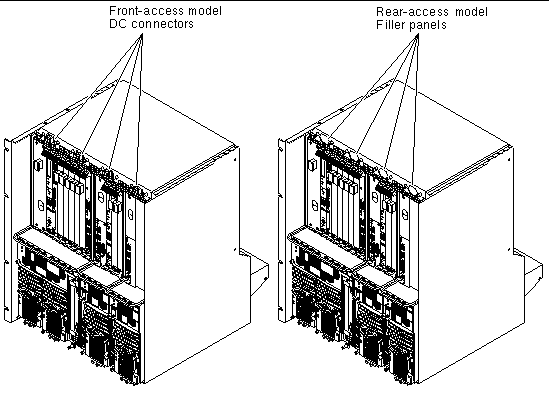
Copyright © 2003, Sun Microsystems, Inc. All rights reserved.